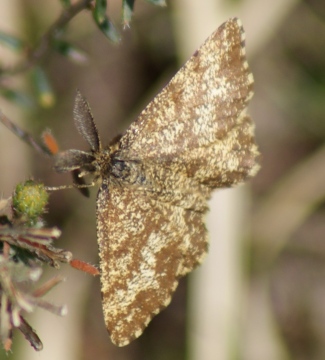Species Account for Ematurga atomaria
Ematurga atomaria (Linnaeus, 1758) 70.275 ![]()
Common Heath
Lepidoptera: macromoths: Geometridae

Reproduction for study and non-profit use permitted, all other rights reserved.
Taxonomic group: larger moths (Lepidoptera: macromoths) - County data
View time series maps for Ematurga atomaria
member log-on for taxon report
Verification Grade:
Adult:
Adult: Good quality photographs or possibly a specimen will be required
Essex RDB: Listed
Images
upload a new image
Ematurga atomaria on UK Moths website
Essex Red Data List comment
There may only be left on one or two sites in the county now.
Species text
Historically local, this day-flying moth is rare in Essex. It is no longer found on the Danbury Ridge or other heathland sites in the county except for Sunshine Plain (South), Epping Forest over an area of about 3 acres. The last records for adjacent areas were Sunshine Plain (North) 2004 and Long Running 2007. As well as heather (C. vulgaris), its larvae are known to feed on vetches/clovers. Two records in the past 15 years suggest that this moth could still be present on ruderal/unimproved habitat at post industrial sites along the Thames Estuary or Dengie Peninsular. (R Smith) References
Habitats
Recorded management for locations with Ematurga atomaria
Recorded substrate and hydrology for locations with Ematurga atomaria
Why not join the Club, register and add a new species page
Interpretation of distribution maps





















